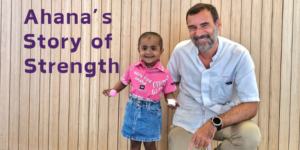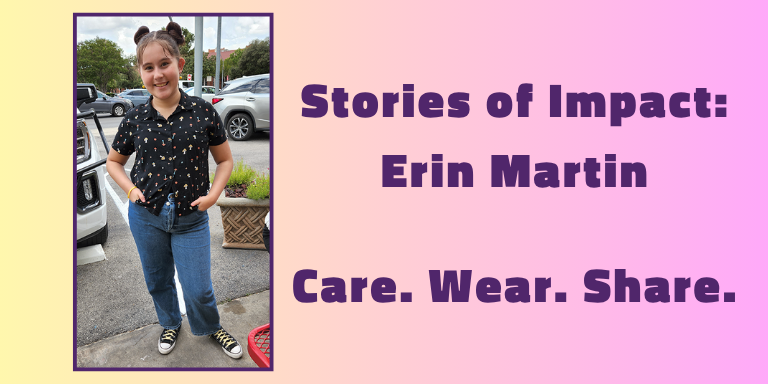Sarcoma in Children
What is Pediatric Sarcoma?
A sarcoma is a cancer that develops in bone or soft tissue. Soft tissue is the connective tissue between body parts and organs and can include muscles, tendons, fat, bone and cartilage, blood vessels, and lymph vessels. Sarcomas can be found anywhere in the body, but they are most often found in the arms, legs, chest, or abdomen.
Pediatric sarcoma is sarcoma occurring in children, and accounts for approximately 15% of pediatric cancer cases, with 1,500 to 1,700 new cases diagnosed each year.
Types of Sarcoma Cancer in Children
There are two main types of sarcoma: soft tissue sarcoma and bone sarcoma. Types of soft tissue sarcoma, often referred to as STS, develops in the soft connective tissue such as the muscles, cartilage, tendons, or fat. Bone sarcoma forms in new tissue in growing bones. Bone and soft-tissue sarcomas are relatively rare childhood cancer tumors. Within the two main types of sarcoma, there are more than 70 subtypes based on the origin and location of cancer.
The most commonly diagnosed types include:
Ewing Sarcoma
A rare type of childhood sarcoma that grows in bone or the soft tissue surrounding it. It is typically found in the center of the body, such as the chest, pelvis, or vertebrae, but can appear in any bone, including the hands, feet, arms, legs, and skull. It is most often diagnosed during puberty, but can also occur in younger children or adults.
Rhabdomyosarcoma
This is the most common type of soft tissue sarcoma in children and accounts for nearly 5 percent of childhood cancers. It develops in the skeletal muscles, which are formed from cells called rhabdomyoblasts. Though it can affect anyone, it primarily occurs in children under four years of age.
Osteosarcoma
This type of sarcoma cancer typically originates in the “long bones” of the body, such as the bones of the arms and legs. It is the most common type of bone cancer in children and is usually diagnosed during puberty or times of growth spurts.
Other common types of sarcoma in children
• Fibrosarcoma – develops in fibrous tissue
• Liposarcoma – develops in fatty tissue
• Synovial sarcoma – develops in cells near the tendons and joints
• Angiosarcoma – develops in the inner lining of the blood vessels
• Chondrosarcoma – develops in the cartilage
Causes, Symptoms, and Risk Factors of Sarcoma in Children
Unfortunately, medical professionals do not know exactly what causes childhood sarcoma. However, some factors that could increase the risk of developing sarcoma include:
• Inherited genetic disorders such as neurofibromatosis and Li-Fraumeni syndrome
• AIDS and Epstein-Barr viral (EBV) infections
• Prenatal genetic changes caused by certain chromosome abnormalities
• Exposure to certain chemicals, such as vinyl chloride
• Previous radiation therapy treatment
Sarcomas often exhibit few symptoms, but symptoms can increase or worsen as the tumor grows and presses on nearby organs or blood vessels. Common sarcoma symptoms in children include:
• A painless lump or mass
• Swelling under the skin
• Pain, tingling, or numbness
• Weakness
• Trouble breathing
Classification of Sarcoma
Sarcoma cancer can be classified into nonmetastatic sarcoma, metastatic sarcoma, and recurrent sarcoma:
Nonmetastatic pediatric sarcoma
The cancer has been partly or completely removed in surgery and has not spread to other parts of the body.
Metastatic pediatric sarcoma
The cancer has spread from where it started to other parts of the body.
Recurrent sarcoma
The cancer has come back (recurred) after it has been treated. It may recur in the original location or in another part of the body.
Diagnosis and Stages of Childhood Sarcoma
Because symptoms of sarcoma often appear in other childhood conditions, diagnosis of sarcoma in children requires a comprehensive medical examination, which includes a physical exam as well as various types of imaging tests, such as an X-ray, CT scan, MRI, or PET scan. If a mass is found, the diagnosis will be confirmed with the results of a biopsy.
Once diagnosed, doctors will assign a stage to cancer. Staging is a way to classify the severity of cancer by identifying where it is located, if or where it has spread, and whether it is affecting other parts of the body. There are several staging systems for pediatric sarcoma that help to determine the most effective treatment options.
One tool that doctors use to universally describe stages of sarcoma is the TNM system. Using results from diagnostic tests, doctors assess the below criteria and assign a stage of severity from 1 to 4.
• Tumor (T): Size and location of the mass
• Node (N): Spread to lymph nodes – quantity and location of affected lymph nodes
• Metastasis (M): Spread beyond lymph nodes to other parts of the body – quantity and location of spread
In addition to the TNM system, doctors use “Grade” (G) to compare cancerous tissue with healthy tissue and examine how much they differ.
Using the T, N, M and G classifications, doctors assign a stage to the cancer. General stages for sarcoma cancer are:
• Stage I: The tumor is small and low grade.
• Stage II: The tumor is small and higher grade.
• Stage III: The tumor is larger and higher grade.
• Stage IV: The cancer has spread to other parts of the body. The original tumor can be any size, any grade, and may or may not have spread to the regional lymph nodes.
Once the sarcoma has been assigned a stage, doctors will coordinate a treatment plan.
Treatment and Prognosis of Sarcoma in Children
Treatment for pediatric sarcoma depends on the size, grade, location, and spread of the tumor. Treatment often includes a combination of:
• Surgery to remove the tumor and nearby tissue
• Chemotherapy
• Radiation
Some sarcomas can be completely removed by surgery. More aggressive chemotherapy or radiation is typically reserved for high-grade sarcomas that have larger tumors or have spread to other parts of the body.
Fortunately, children with sarcoma cancer often respond better to treatment than adults and thus have a better prognosis. The prognosis of children with sarcoma is described in terms of the five-year survival rate based on how much a tumor has spread.
Localized Spread: Limited to the part of the body where it originated; 81% five-year survival rate
Regional Spread: Spread to nearby structures or lymph nodes; 57% five-year survival rate
Distant Spread: Spread to distant parts of the body or other organs such as the lungs; 16% five-year survival rate
The overall five-year survival rate for pediatric sarcoma is 65%, but this could be lower or higher and is influenced by several factors including tumor size, grade, and location; the age and overall health of the child at the time of diagnosis; and the response to treatment.
Despite significant improvements in outcomes for some pediatric cancers, like acute lymphoblastic leukemia, survival rates in metastatic sarcomas have not improved in 40 years — representing some of the greatest unmet needs in pediatric cancers.
Pediatric Sarcoma Research
Despite modern medical advancements, children with sarcoma have very few promising treatment options — especially in the case of recurrent sarcoma. By investing in innovative, next-generation approaches to therapy and forging collaborative, international partnerships, Solving Kids’ Cancer aims to change the prognosis for children with pediatric sarcoma and rare childhood cancers.
Currently, clinical trials are exploring a combination of approaches, including immunotherapy,1 to counteract the various ways sarcoma cells evade the host immune system. Our project, Can We Train a Child’s Immune Cells to Recognize and Kill Cancer Cells?, used vaccines created from a patient’s immune cells to target and kill cancer cells. We also helped fund a phase I/II study using armed T-cells with GD22 that had at least one signal (immune response) in osteosarcoma pediatric patients.
Pushing the limits of innovation can change the world for children with sarcoma. When you give to Solving Kids’ Cancer, you help change lives by making better treatment options possible — because every kid deserves to grow up®.
Sources
1 Current State of Immunotherapy and Mechanisms of Immune Evasion in Ewing Sarcoma and Osteosarcoma – https://www.ncbi.nlm.nih.gov/pmc/articles/PMC9818129/
2 Activated T Cells Armed With GD2 Bispecific Antibody in Children and Young Adults With Neuroblastoma and Osteosarcoma – https://clinicaltrials.gov/ct2/show/NCT02173093



















































































